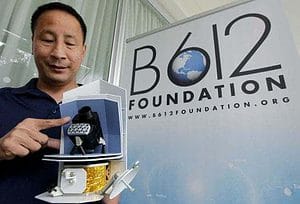
There are millions of asteroids currently residing in our Solar System, of which some 500 thousand orbit in the inner solar system, where our planet also lies. Space agencies in the world have only mapped so far a mere 1% of these. Clearly, an asteroid impact with Earth poses a serious and realistic threat to humanity, and based on this the B612 Foundation was founded and its most ambitious project to date spurred. Thus, the B612 Foundation unveiled its plans to build, launch, and operate the first privately funded deep space mission, dubbed SENTINEL, a space telescope to be placed in orbit around the Sun, ranging up to 170 million miles from Earth, for a mission of discovery and mapping.
“During its 5.5-year mission survey time, Sentinel will discover and track half a million Near Earth Asteroids, creating a dynamic map that will provide the blueprint for future exploration of our Solar System, while protecting the future of humanity on Earth,” said Ed Lu, Space Shuttle, Soyuz, and Space Station Astronaut, now Chairman and CEO of the B612 Foundation.
The B612 Foundation is working with Ball Aerospace, Boulder, CO, which has designed and will be building the Sentinel Infrared (IR) Space Telescope with the same expert team that developed the Spitzer and Kepler Space Telescopes. The telescope is expected to include a 20-inch diameter mirror and scan the entire night half of the sky every 26 days to identify every moving object with repeated observations in subsequent months. Data collected by the telescope will be relayed back to Earth where asteroid orbits can be precisely deducted using specialized software. The asteroid map will be shared with universities and governmental space agencies, alike.
While Sentinel’s primary goal is that of mapping asteroids to predict potential threatening scenarios, its mission could also pose an economic benefit. There are currently trillions of dollars worth of valuable material present in asteroids in our solar system, and identifying those which are the most rich and easy to reach by an expedition could prove to be highly important in the future.
“The B612 Sentinel mission extends the emerging commercial spaceflight industry into deep space – a first that will pave the way for many other ventures,” said the former Director of NASA Ames Research Center Dr. Scott Hubbard, B612 Foundation Program Architect and Professor of Aeronautics and Astronautics at Stanford University. “Mapping the presence of thousands of near earth objects will create a new scientific database and greatly enhance our stewardship of the planet.”
B612 Foundation via Next Big Future





